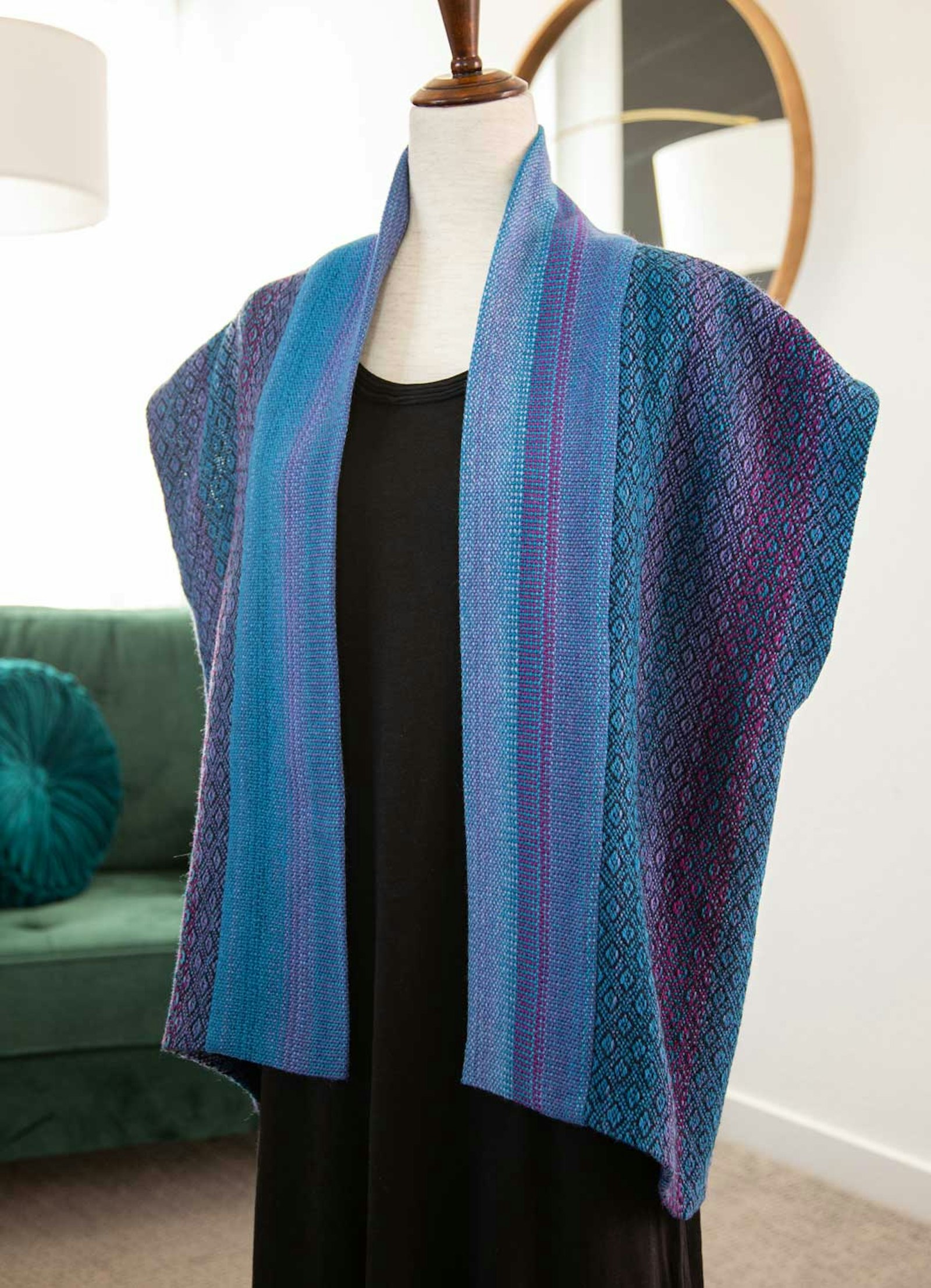I am very fortunate to have a lifelong friend who is also a fiber friend. Sarah and I have been friends since third grade. In addition to the usual kinds of fun and nonsense that friends get into, we learned needlework together from my aunt when we were in grade school.
 | |
| How would I find the nerve to cut this slippery bamboo fabric? |
In college, we discovered knitting, which had advantages over needlework because it tended to become garments rather than samplers or pillows. Then we learned to spin, and we began going to fiber conferences, discovered Interweave magazines, and widened our circle of fiber friends. And now and then we would talk about weaving. But we both were related to phenomenal seamstresses (my mom, Sarah's grandmother), and we were both intimidated by the expertise it took to make garments from cloth. So we agreed that weaving was not in our future because, we reasoned, weaving makes cloth, and then one would have to sew. But one day Sarah called and announced that there were such things as shawls that took no sewing whatsoever (who knew!), and that the time had come for us to learn weaving. So off we went to The Weavers' School, and I was hooked.
 | |
| Sarah conducts a service in her handwoven stole (slightly askew) |
Time passed, and I happily wove table runners and throws and shawls and never thought of sewing at all. But this is actually a tale of two Sarahs, and it has a moral. A few years ago, my dear college roommate and friend, Sarah ("the other Sarah," as she sometimes calls herself), found her calling and started divinity school. She had no sooner enrolled than she asked me to weave the stole that she would wear at her ordination ceremony. So I bought a wonderful book on liturgical weaving, happily thought about designs for several years, bought yarn, sketched, daydreamed, and generally avoided the harsh reality that this project would probably involve some sewing, right up to the day I took the fabric off the loom.

Fortunately, I have a nice sewing machine bought when our daughter turned out to have her grandmother's seamstress genes. But being like Cleopatra ("queen of denial"), I spent time buying lining, interfacing, and thread, reading articles on sizing vestments, and generally delaying until the ordination day was looming, and there was no avoiding anymore. The time had come to cut the cloth and put needle to fabric. I was worried that the slippery bamboo twill would fall apart the moment I cut it, or that I would make some tragic mistake in the sewing and Sarah would give her inaugural sermon wearing a misshapen garment. But it all turned out fine. The cloth held, the sewing turned out to be fun, the result looked great, and Sarah was the envy of the assembled ministry because of her handwoven stole.
So here's the moral: I should have started sewing with my handwovens a long time ago. I admire the garments featured in the latest issue of Handwoven and the fantastically beautiful, and sometimes very tailored garments made by other sewing weavers. I also think that simple shawls and ruanas and loom-shaped garments can be every bit as wondrous and beautiful. The point is not that one is better than the other.

The point is that, while I may never become an expert seamstress, I don't want to be limited in what I can create with my handwoven cloth. I now have a copy of the new eBook Designing to Weave and Sew, full of Jean Scorgie's expert advice for planning cloth, patterns, and garments so that everything comes together perfectly. Sewing advice, seam allowances, serging your handwoven edges, edging and embellishment––it's all there. So, thanks to Sarah and Sarah and Jean, I have the courage to start on a new phase of my lifelong fiber adventure. And isn't that what friends are for?


